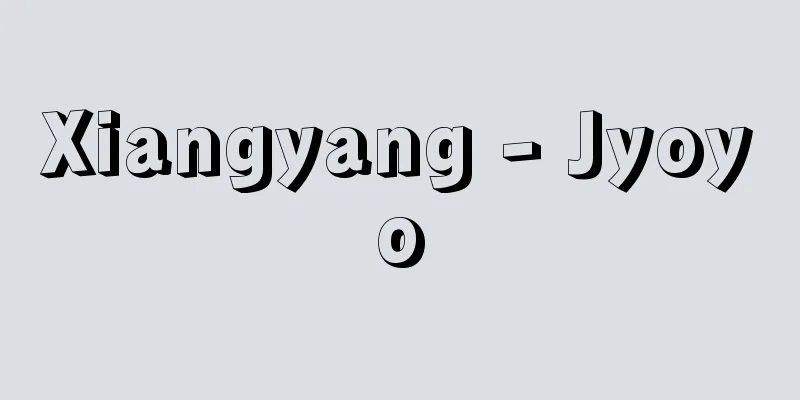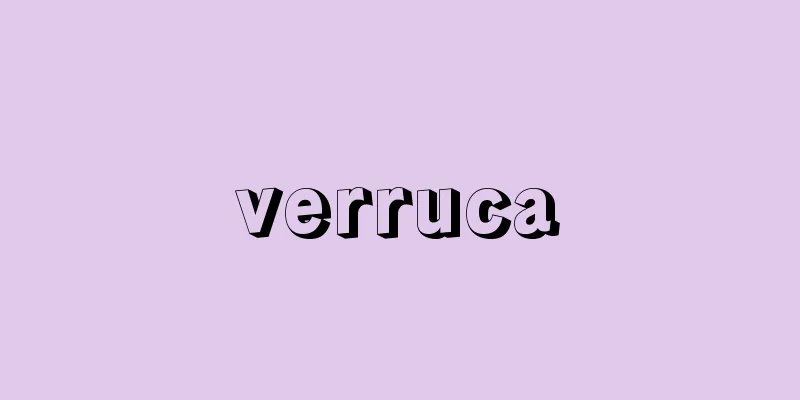Public assistance - Seikatsuhogo (English spelling)

|
Based on the principles of Article 25 of the Japanese Constitution, this system aims to guarantee a minimum standard of living for people who are in financial difficulty while encouraging self-reliance, and is the cornerstone of Japan's poverty relief policy. The current Public Assistance Act (Act No. 144 of 1950) was established after going through a series of institutional changes, including the "Public Assistance Regulations" enacted in 1874 (Meiji 7), the "Relief Act" enacted in 1929 (Showa 4), the "Principles for Emergency Livelihood Assistance for People in Need" enacted in December 1945 (Showa 20) after the Second World War, and the "Old Public Assistance Act" enacted in 1946. [Hisakazu Shirasawa, Kentaro Nakagawa, and Rie Iwanaga, July 19, 2016] HistoryIn 1945, after the end of the Second World War, Japan was occupied by the Allied Powers until 1952. After the defeat, the lives of all Japanese citizens were in a state of starvation, and the state of poverty and chaos was so severe that it was called "total slumization." In response to this situation, the Japanese government formulated and implemented the "Guidelines for Emergency Assistance for the Living Needy" as an emergency measure, as a result of instructions from the General Headquarters of the Supreme Commander for the Allied Powers (GHQ) regarding the conversion of military supplies into civilian use. After that, a comprehensive relief plan called the "Relief and Welfare Plan" was drawn up (December 1945), but GHQ requested changes to the plan through Memorandum No. 775 (February 1946). The memorandum was as follows: (1) The Imperial Japanese Government, through the prefectures and local government agencies, should establish a single nationwide government agency which would provide adequate food, clothing, housing, and medical care to all needy persons on an equal basis, without discrimination or preferential treatment. (2) The Imperial Japanese Government should assume responsibility for the financing and implementation of the project by April 30, 1946, and therefore it should not be delegated or delegated to private or quasi-governmental agencies. (3) There shall be no limit on the amount of relief that may be granted, subject to the amount necessary to prevent hardship. Based on this memorandum, the Relief Act (Act No. 39 of 1929), Military Aid Act (Act No. 1 of 1917), Maternal and Child Protection Act (Act No. 19 of 1937), Medical Care Protection Act (Act No. 36 of 1941), and Wartime Disaster Protection Act (Act No. 71 of 1942) were abolished and integrated to create the Public Assistance Act, which was enacted on October 1, 1946. The contents of this old Public Assistance Act (Act No. 17 of 1946) are as follows: The recipients of protection are the general poor and needy, and the principles of non-discrimination and equality and state responsibility are adopted. In this respect, it is fundamentally different in nature from the prewar relief system (which adopted a discriminatory and restrictive principle of assistance, and the Relief Act lacked clear provisions for state responsibility). However, the law included a disqualification clause stating that it would not provide protection to "those who are capable but have no intention of working, those who neglect their work, or those who do not make an effort to support themselves" or "those with bad behavior." Protection under the old law was centered on livelihood assistance, against the backdrop of postwar poverty, but fundamental problems arose that needed to be improved. These were summarized in the "Recommendations for Improving and Strengthening the Public Assistance System" by the Social Security System Council. These recommendations included: (1) the content of protection should be health and cultural, (2) citizens should have the right to claim protection, (3) protection officers should be qualified, (4) welfare commissioners should be a cooperative organization, and (5) educational assistance and housing assistance should be newly established. In response to these recommendations, the Ministry of Health and Welfare prepared a draft of the Public Assistance Act, and after consultations with related ministries and GHQ, the bill was submitted to the Diet. The bill was slightly revised after deliberations in both the House of Representatives and the House of Councillors, and was promulgated on May 4, 1950, and came into effect the same day. [Rie Iwanaga July 19, 2016] Fundamental principles of lawThe Public Assistance Act is based on four principles and four rules. It also stipulates that its interpretation and implementation must be based on the basic principles (Article 5 of the same Act). (1) Guarantee of a minimum standard of living through state responsibility: "The purpose of this law is, based on the principles set forth in Article 25 of the Constitution of Japan, for the state to provide necessary protection to all citizens who are in need according to the level of their need, to guarantee them a minimum standard of living, and to encourage their self-reliance" (Article 1 of the Public Assistance Law). The Public Assistance Law embodies the right set forth in Article 25 of the Constitution of Japan, that is, the right to life. Necessary protection is provided under the responsibility of the state. (2) Non-discriminatory and equal: "As long as all citizens meet the requirements of this Act, they shall be able to receive the protection provided by this Act on an equal basis without discrimination" (Article 2 of the same Act). Citizens have the right to claim protection, and this right to claim protection is granted to all citizens on an equal basis without discrimination. Non-discriminatory and equal means that "no person shall be given preferential or discriminatory treatment based on the cause of the situation requiring protection (for example, illness, injury, disaster, death of the head of the household, unemployment, etc.), or on race, creed, sex, social status, family origin, etc." (3) Guarantee of a healthy and cultured minimum standard of living “The minimum standard of living guaranteed by this Act must be one which enables one to maintain a healthy and cultured standard of living” (Article 3 of the same Act), making it clear that the minimum standard of living is not simply a level at which one can barely continue to survive. (4) Supplemental nature of protection "Protection is provided on the condition that those who are in financial difficulty utilize their available assets, abilities, and everything else to maintain a minimum standard of living" (Article 4, Paragraph 1 of the same law), and the utilization of assets such as land and buildings, the utilization of labor abilities, and "everything else" are required as conditions for protection. Furthermore, the fulfillment of the support obligations of those obligated to provide support under the Civil Code and assistance under other laws are required to take precedence over protection (Article 4, Paragraph 2 of the same law). In addition, in the case of urgent situations (situations that could be life-or-death if left unattended, or that go against the purpose of this law, i.e. the principles of Article 25 of the Constitution), investigation and confirmation are set aside for the time being and protection is provided for the time being (Article 4, Paragraph 3 of the same law, official protection). [Rie Iwanaga July 19, 2016] Principles of ProtectionIn addition to the four basic principles mentioned above, the Public Assistance Act also stipulates the following four principles: (1) The principle of application for protection It is stipulated in Article 7 of the same law that "protection shall commence upon application by the person in need of protection, his/her support obligation, or other relatives living together." Since the current Public Assistance Law is a right of the people, protection should be considered based on the will of the people, and application for protection is the principle. However, Article 7 of the same law includes a proviso that "when a person in need of protection is in an urgent situation, necessary protection may be provided even without an application for protection," and in urgent cases, protection must be provided by the authority of the protection implementing agency without waiting for an application. This is in consideration of the fact that there are many people in need of protection who are unable or have difficulty exercising their right to claim protection, and the government is required to assist those who want to apply but are unable to express their intention to apply. (2) Principle of standards and degree of protection "Protection shall be based on the needs of the person in need of protection measured according to the standards set by the Minister of Health, Labor and Welfare, and shall be provided to the extent that the shortfall that cannot be met by the person's money or goods" (Article 8, Paragraph 1 of the same law). The protection standards are administratively determined by the Minister of Health, Labor and Welfare in order to respond immediately to socio-economic conditions, but the views of the person in charge of public assistance may be questioned. The protection standards are "sufficient to meet the minimum living needs of the person in need of protection, taking into account the necessary circumstances according to the age, sex, household composition, location, and other types of assistance" (Article 8, Paragraph 2 of the same law). Based on this principle, the Minister of Health, Labor and Welfare sets the standards guaranteed by public assistance, that is, the protection standards. The protection standards must be sufficient to meet the minimum living needs and not exceed them. Although theoretically there should be a distinction between these protection standards, they are used both as standards for determining the necessity of assistance and as standards for determining the degree of assistance. The standard for determining whether or not protection is needed is a standard for comparing the total amount of each assistance standard (minimum living expenses) with income to determine whether or not protection is needed, and the standard for determining the level of protection is a standard for determining the amount of protection to be paid to those who are deemed to need protection. The need and level of protection are determined by conducting a means test to investigate the assets of the person in need of protection. (3) The principle of responding promptly to need: "Protection shall be provided effectively and appropriately, taking into consideration the differences in the actual needs of individuals or households, such as the age, sex, and health condition of those in need of protection" (Article 9 of the same law). This was established with the intention that protection should be provided effectively and appropriately according to the actual needs of those in need of protection, rather than being applied mechanically. (4) Principle of the household unit "The necessity and the degree of protection shall be determined on a household basis. However, when this is not possible, it may be determined on an individual basis" (Article 10 of the same law). In principle, protection is provided on a household basis, which is a unit of people living in the same house and earning the same livelihood. However, in the face of diverse living conditions, it may be difficult to mechanically apply such provisions. For example, migrant workers who do not live in the same house, children living in boarding houses, and hospitalized persons are generally considered to be part of the same household. In cases where members of the same household are treated as members of the same household in a way that would not be in line with the objectives of guaranteeing a minimum standard of living and encouraging self-reliance, such as when a person goes on to university or is hospitalized for a long period of time, the necessity and the degree of protection may be determined on an individual basis (household separation). [Hisakazu Shirasawa, Kentaro Nakagawa, and Rie Iwanaga, July 19, 2016] Contents of protectionThere are eight types of assistance: living assistance, housing assistance, education assistance, medical assistance, nursing care assistance, childbirth assistance, livelihood assistance, and funeral assistance. With the exception of medical assistance and nursing care assistance, benefits are generally paid in cash. Protection under the Public Assistance Act encompasses all aspects of life, but for convenience it is divided into these eight types of assistance. Depending on the needs of the person in need of assistance, there are cases where only one type of assistance is provided (single payment) and cases where two or more types of assistance are provided (combined payment). The necessity and level of assistance is determined by looking at the difference between the needs of the recipient calculated using the public assistance standard and the certified income. For income from work, a certain amount is deducted as necessary expenses associated with work (work deduction), increasing the amount of money left in the hands of the recipient, encouraging them to work and become independent. The affairs relating to the decision-making and implementation of public assistance are considered statutorily entrusted affairs and are carried out by prefectural governors, mayors of cities and special wards, and mayors of towns and villages that have established welfare offices. As of April 2015, there are 1,247 welfare offices nationwide. Social welfare officers are responsible for providing guidance and advice to households receiving assistance, with welfare commissioners positioned as cooperating agencies. The basis for the consultation and support activities carried out by social welfare officers is Article 27 "Guidance and instructions" and Article 27-2 "Consultation and advice" of the same law, the latter of which is positioned as a local government matter. The costs of implementing public assistance are covered by the national treasury and local allocation tax. The national government covers 75% (three-quarters) of the cost of public assistance, while prefectures, cities, or towns and villages that have welfare offices cover the remaining 25% (one-quarter). [Rie Iwanaga July 19, 2016] Trends in public assistanceThe number of people on welfare in Japan, excluding the period of confusion after the Second World War, was about 1.32 million to 1.47 million people, or about 12 people per 1000 people, from 1971 (Showa 46) until the autumn of 1984. However, the number of people on welfare began to decrease from the autumn of 1984, and the following year, in 1985, the number had fallen to 1.43 million people, or 11.8 people per 1000 people. Since then, the lowest rate in the history of welfare has been recorded every year, reaching 880,000 people in 1995 (Heisei 7), or 7 people per 1000 people. After that, it gradually increased slightly, reaching about 1.01 million people in 1999, or 7.9 people per 1000 people. The decrease in the number of people on welfare that began in the autumn of 1984 reached about 400,000 people in the five years up to 1989. There are various views on the impact on the number of people receiving welfare. In addition to economic factors such as the booming economy and institutional factors such as the introduction of the basic pension system, administrative factors such as measures to suppress receipt of benefits in the name of "optimizing public assistance" are also said to be major. Specifically, these include refusing to accept applications for reasons such as incomplete documentation or the prospect of receiving a pension, forcing people to work, and emphasizing the fulfillment of support obligations. It has been criticized that the accumulation of such actions strengthens the stigma against public assistance and discourages people from applying. Applying for assistance is the starting point for receiving assistance, but the existence of people in poverty who do not get to the point of applying for assistance has become a problem, and administrative measures to suppress applications in particular have been criticized as "waterfront operations." In fact, there have been cases and lawsuits involving public assistance. For example, there has been the death of a mother in a single-parent household from starvation over an application for public assistance (Sapporo, 1987), a dispute over the disposition of savings funds meant to cover the recipient's future expenses (Akita, Kato lawsuit, final judgment 1993), a dispute over the decision to cancel insurance to cover high school tuition fees (Fukuoka, Nakajima lawsuit, final judgment 2004), and a dispute over the decision to grant only one day of medical assistance to a person with neither a home nor a job (Nagoya, Hayashi lawsuit, final judgment 2001). The "capture rate," which represents the percentage of households below the standard for welfare assistance that are actually receiving welfare assistance, varies depending on the estimation method, but at its lowest it is below 10% and at its highest it is around 30%, suggesting that there are many people who are not receiving welfare assistance but are living in poverty. The protection rate (the ratio of protected households to the total number of households) hit bottom in the mid-1990s and then gradually began to rise. As of November 2015, the actual number of protected individuals was 2,164,375, and the number of protected households was 1,632,220, resulting in a ratio of 17 people per 1,000 people (preliminary figures for February 2016). This has increased especially since the global financial crisis around October 2008, and the increase in recipients who are able to work has become a particular problem. However, among households receiving welfare, the proportion of working households is 15.5%, and the proportion of non-working households is 84.5%. The composition of households receiving welfare is 45.4% for "elderly households," 7.1% for "mother-child households," 29.4% for "injured, sick, or disabled households," and 18.1% for "other households." Elderly households account for nearly half of the total, and looking at the annual trends in the number of people receiving assistance by age group, we can see an increase in the "70 years and older" and "60-69 years old" age groups. The proportion of elderly people and people with injuries, illnesses, or disabilities is high amongst households receiving assistance, with these household types accounting for over 70% (figures as of November 2013). [Rie Iwanaga July 19, 2016] Movement for system reformIn the 2000s, as the number of households on welfare increased and reports of fraudulent benefits became more and more heated, the system was reviewed and the law was amended. While there are problems such as an increase in people living in poverty, including welfare recipients, and the worsening of poverty, there are also concerns about the increase in welfare costs. A comprehensive review of welfare in recent years began at the Expert Committee on the Future of the Public Assistance System, which was established in August 2003. The matters discussed at the expert committee led to a review of welfare standards, specifically the abolition of the elderly premium and mother-child premium (only the mother-child premium was reinstated in December 2009), and the introduction of a self-reliance support program. The review of the protection standards continued, and the standard amount for 95% of households was lowered from August 2013 to fiscal 2015 with the intention of gradually implementing the necessary adjustments over a period of about three years, based on the idea of adjusting distortions such as age, number of household members, and regional differences, and taking into account price trends (the latter figure is from the Ministry of Health, Labor and Welfare's "14th Social Security Council, Public Assistance Standards Subcommittee Document 2 (held on October 4, 2013)"). Furthermore, the "Act to Partially Amend the Public Assistance Act" was enacted in December 2013 and fully implemented on July 1, 2014. According to the Ministry of Health, Labor and Welfare, which proposed the amendment, the main changes in this law are (1) promotion of independence through employment, (2) support for health and lifestyle aspects, (3) strengthening measures against fraudulent and inappropriate receipt of benefits, and (4) optimization of medical assistance. There has been much criticism of these revisions. Specifically, criticisms include that the standard for livelihood assistance is used as a reference standard for other policies for low-income earners, that the cuts would have a large ripple effect, that the revised law amounts to the legalization of a so-called "border control strategy," and that the measures ignore the low rate of people receiving livelihood assistance. The standard for livelihood assistance is used as a reference standard for other systems, such as the tax-exempt limit for individual residents' taxes, school assistance, exemptions from childcare fees, and operating costs for child care facilities, and it has been reported that the revision of the standard is actually having an impact. [Rie Iwanaga July 19, 2016] "Revised and expanded interpretation and application of the Public Assistance Law, by Koyama Shinjiro et al. (1951, Japan Social Work Association/reprint edition, 2004, National Social Welfare Council)" ▽ "Public Assistance Theory, by Kagoyama Kyo (1978, Koseikan)" ▽ "Analysis of Social Welfare in the Occupied Period, by Suganuma Takashi (2005, Minerva Shobo)" ▽ "How Did Public Assistance Design a Minimum Standard of Living? - A Historical Analysis of Protection Standards and Implementation Guidelines, by Iwanaga Rie (2011, Minerva Shobo)" ▽ "Issues in Public Assistance - Regarding Appeals, Administrative Operation, and System Reform, by Yoshinaga Jun (2011, Takasuga Publishing)" ▽ "Public Assistance Handbook, various years' editions (Chuohoki Publishing)" ▽ "Public Assistance Guide, various years' editions compiled by the Public Assistance System Research Group (Daiichi Hoki)" [Reference items] | | | | | | | | |Source: Shogakukan Encyclopedia Nipponica About Encyclopedia Nipponica Information | Legend |
|
日本国憲法第25条の理念に基づいて、生活に困窮している国民に対して、最低生活の保障とともに自立の助長を図る制度であり、日本の貧困救済政策の要(かなめ)となる制度である。現行生活保護法(昭和25年法律第144号)は、1874年(明治7)制定の「恤救(じゅっきゅう)規則」、1929年(昭和4)制定の「救護法」、第二次世界大戦後の1945年(昭和20)12月制定の「生活困窮者緊急生活援護要綱」、1946年制定の「旧生活保護法」などの制度的変遷を経て成立した。 [白沢久一・中川健太朗・岩永理恵 2016年7月19日] 沿革1945年、第二次世界大戦が終結し、以後1952年まで、日本は連合国による占領下に置かれた。敗戦した日本は、国民すべての生活が飢餓状態にあり、その窮乏し混乱した状態は「総スラム化」と称されるほどであった。この状況に対し日本政府は、連合国最高司令官総司令部(GHQ)による軍用物資の民生転換に関する指示の結果として、応急措置である「生活困窮者緊急生活援護要綱」を策定実施した。 その後、包括的な救済計画として、「救済福祉計画」(1945年12月)をたてたが、これに対して、GHQは775号覚書(1946年2月)により計画の変更を求めた。覚書は、下記のような内容であった。 (1)日本帝国政府は都道府県ならびに地方政府機関を通じ差別または優先的に取扱いをすることなく平等に困窮者に対して適当なる食糧、衣料、住宅ならびに医療措置を与えるべき単一の全国的政府機関を設立すべきこと。 (2)日本帝国政府は1946年4月30日までに本計画に対する財政的援助ならびに実施の責任態勢を確立すべきこと。したがって私的または準政府機関に対し委譲・委任されるべきではないこと。 (3)困窮を防止するに必要なる総額の範囲内において与えられる救済の総額に何等(なんら)の制限を設けないこと。 この覚書に基づいて、救護法(昭和4年法律第39号)、軍事扶助法(大正6年法律第1号)、母子保護法(昭和12年法律第19号)、医療保護法(昭和16年法律第36号)および戦時災害保護法(昭和17年法律第71号)を廃止・統合して、生活保護法を立案し、同法は1946年10月1日に成立した。この旧生活保護法(昭和21年法律第17号)の内容は次のとおりである。保護の対象は、生活困窮者一般であり無差別平等、国家責任の原則をとっている。この点で、戦前の救済制度(差別的・制限的な扶助主義をとり、救護法は国家責任の明確な規定を欠いていた)とは根本的に性格を異にする。ただし、「能力があるにもかかわらず、勤労の意思のない者、勤労を怠る者その他生計の維持に努めない者」と「素行不良な者」にはこの法律による保護は行わない、といういわゆる欠格条項を設けた。 旧法による保護は、戦後の生活困窮を背景として、生活扶助を中心に実施されたが、改善されるべき根本的な問題が生じた。それは、社会保障制度審議会による「生活保護制度改善強化に関する勧告」にまとめられている。すなわち、(1)保護の内容は健康で文化的であること、(2)国民に保護請求権があること、(3)保護担当職員の有資格化、(4)民生委員は協力機関であること、(5)教育扶助および住宅扶助の新設、である。同勧告を受け厚生省は生活保護法の原案を作成し、関係省やGHQとの協議を経て、国会に法案提出の運びとなった。法案は、衆議院・参議院のそれぞれの審議を経て若干修正され、1950年5月4日に公布され即日施行された。 [岩永理恵 2016年7月19日] 法の基本原理生活保護法は四つの原理、四つの原則によって成り立っている。また、その解釈と運用は、すべて基本原理に基づかなければならないとされている(同法5条)。 (1)国家責任による最低生活保障 「この法律は、日本国憲法第25条に規定する理念に基き、国が生活に困窮するすべての国民に対し、その困窮の程度に応じ、必要な保護を行い、その最低限度の生活を保障するとともに、その自立を助長することを目的とする」(生活保護法1条)としている。生活保護法とは、日本国憲法第25条に定める権利、すなわち生存権を具現化するものである。必要な保護は、国家の責任において行われる。 (2)無差別平等 「すべて国民は、この法律の定める要件を満たす限り、この法律による保護を、無差別平等に受けることができる」(同法2条)としている。国民には保護を請求する権利があり、保護請求権は国民すべてに対し無差別平等に与えられている。無差別平等とは、「保護を要する状態に立ち至った原因の如何(いかん)(たとえば、病気、傷害、災害、世帯主の死亡、失業等)や、人種、信条、性別、社会的身分、門地等により優先的または差別的に取り扱われることはない」という意味である。 (3)健康で文化的な最低生活保障 「この法律により保障される最低限度の生活は、健康で文化的な生活水準を維持することができるものでなければならない」(同法3条)とし、最低生活とは単にかろうじて生存を続けることが可能な程度ではないことを明らかにした。 (4)保護の補足性 「保護は、生活に困窮する者が、その利用し得る資産、能力その他あらゆるものを、その最低限度の生活の維持のために活用することを要件として行われる」(同法4条1項)とされ、土地・家屋などの資産の活用、労働能力の活用、「その他あらゆるもの」を活用することが、保護の要件として求められる。さらに、民法に定められている扶養義務者の扶養義務の履行、他の法律による扶助は、保護に優先して求められる(同法4条2項)。なお、急迫状況(放置したなら生死にかかわるか、本法の趣旨=憲法第25条の理念に反する状況)の場合には、調査確認はひとまずおいて、とりあえず保護することになっている(同法4条3項、職権保護)。 [岩永理恵 2016年7月19日] 保護の原則生活保護法は前記のような四つの基本原理と同時に、さらに次の四つの原則を規定している。 (1)申請保護の原則 「保護は、要保護者、その扶養義務者又はその他の同居の親族の申請に基いて開始するものとする」(同法7条)と規定されている。現行生活保護法が国民の側の権利であることから、国民の側の意思の発動に基づいて保護が検討されるべきであるとし、申請保護を原則とした。ただし、同法第7条には「要保護者が急迫した状況にあるときは、保護の申請がなくても、必要な保護を行うことができる」という但書がされており、急迫の場合には、申請を待たずに、保護の実施機関の職権によって保護しなければならない。これは、要保護者のなかには保護請求権を行使することのできない者や困難な者が少なくないことに配慮したものであり、行政には、申請意思があるが申請意思を表示する能力がない人などへの援助が求められている。 (2)基準および程度の原則 「保護は、厚生労働大臣の定める基準により測定した要保護者の需要を基とし、そのうち、その者の金銭又は物品で満たすことのできない不足分を補う程度において行うものとする」(同法8条1項)とされ、保護基準の決定は、社会経済状況に即時対応するため厚生労働大臣によって行政的に決められているが、その任にあたる者の生活保護観が問われよう。その保護基準は、「要保護者の年齢別、性別、世帯構成別、所在地域別その他保護の種類に応じて必要な事情を考慮した最低限度の生活の需要を満たすに十分なもの」(同法8条2項)とされている。この原則に基づき厚生労働大臣は、生活保護が保障する基準、すなわち保護基準を定める。保護基準は、最低生活の需要を満たすのに十分であって、かつこれを超えないものでなければならない。この保護基準は、理論的には区別すべきであるが、保護の要否を決める基準としても、保護の程度を決める基準としても用いられている。保護の要否を決める基準は、各扶助の基準の合計額(最低生活費)と収入とを比較して保護受給が必要か否かを決定する基準であり、保護の程度を決める基準は、保護が必要とされた者に対して支給する保護費を決定するための基準である。保護の要否・程度は、要保護者の資産調査(ミーンズ・テスト)を行って決定される。 (3)必要即応の原則 「保護は、要保護者の年齢別、性別、健康状態等その個人又は世帯の実際の必要の相違を考慮して、有効且(か)つ適切に行うものとする」(同法9条)とされる。法を機械的に運用するのではなく、要保護者の実際の必要に応じ有効かつ適切に保護が実施されるべきだという趣旨により設けられたものである。 (4)世帯単位の原則 「保護は、世帯を単位としてその要否及び程度を定めるものとする。但し、これによりがたいときは、個人を単位として定めることができる」(同法10条)。保護は同一家屋に居住し、同一生計を営んでいる世帯を単位として行うことが原則である。しかし、多様な生活実態のなかでは、このような規定を機械的に当てはめることが困難な場合もある。たとえば、同一家屋に居住していない出稼ぎ者、寄宿生活をしている子供、入院中の者などは、一般的には同一世帯とみなされる。同一世帯であるが、同一世帯として扱うと最低生活の保障、自立の助長という目的にそぐわない場合、たとえば大学などに進学したり、長期入院などをした場合には、その者を世帯からはずし、またはその者だけを保護するなど、個人を単位に保護の要否と程度を決定する場合もある(世帯分離)。 [白沢久一・中川健太朗・岩永理恵 2016年7月19日] 保護の内容保護の種類には、生活扶助、住宅扶助、教育扶助、医療扶助、介護扶助、出産扶助、生業扶助、および葬祭扶助の八つがある。医療扶助と介護扶助を除いて現金給付を原則とする。生活保護法による保護は、生活のあらゆる面を包括するものであるが、便宜上このような8種類の扶助に分けて行うことになっている。保護は要保護者の必要に応じ、1種類だけの扶助が行われる場合(単給)と、いずれか2種類以上の扶助が行われる場合(併給)がある。 保護の要否と程度は、生活保護基準を用いて算出した要保護者の需要と収入認定額の差をみることによって決められる。勤労収入については、勤労に伴う必要経費として一定額を控除して収入認定を行い(勤労控除)、生活保護受給者の手元に残る金額を増やし、勤労意欲の増進および自立の助長を図っている。 生活保護の決定、実施に関する事務は、法定受託事務とされ、都道府県知事、市および特別区の長、福祉事務所を設置する町村の長が行う。福祉事務所は、全国で1247か所(2015年4月時点)設置されている。保護世帯への指導や助言などは社会福祉主事があたり、民生委員は協力機関として位置づけられている。なお、社会福祉主事が行う相談援助活動の根拠は、同法第27条「指導及び指示」と第27条の2「相談及び助言」であり、後者は自治事務と位置づけられている。 生活保護の実施にかかわる費用については、国庫負担と地方交付税を通じた財政支援が行われている。国は生活保護費に対して75%(4分の3)負担し、福祉事務所を設置する都道府県や市または町村が25%(4分の1)を負担することとなっている。 [岩永理恵 2016年7月19日] 生活保護の動向日本の被保護者数は、第二次世界大戦後の混乱期は別にして、1971年(昭和46)以降1984年の秋までは被保護人員は約132万~147万人、人口1000人当り12人台であった。しかし、1984年秋から被保護者の数は減少し始め、翌年の1985年には被保護者の数は143万人、人口1000人当り11.8人と減少した。以降、毎年、生活保護史上保護率最低記録を更新し続け、1995年(平成7)は88万人、人口1000人当り7人となった。その後、徐々に微増し、1999年には約101万人、人口1000人当り7.9人となった。1984年秋に始まった生活保護受給者の減少は1989年までの5年間で約40万人に上った。 このような被保護者数に与える影響については、さまざまな見解がある。経済の好況という経済的要因や基礎年金制導入による制度的要因に加え、「生活保護の適正化」の名のもとでの受給抑制策という行政的要因も大きいともいわれる。これは、具体的には、書類不備や年金などの受給見込みがあることなどを理由に申請を受理しない、稼働強要、扶養義務履行強調などであり、このような行為の積み重ねが、生活保護へのスティグマ(負の烙印(らくいん))を強め、申請意思を萎縮(いしゅく)させるという批判がある。保護の申請は保護受給の出発点であるが、その手前で保護申請に至らない生活困窮者の存在が問題化しており、とくに申請を抑制しようという行政運用は「水際作戦」とよばれ批判されている。 実際、生活保護にまつわる事件や訴訟が起こっている。たとえば、生活保護申請をめぐっておこった母子世帯の母の餓死事件(札幌、1987年)や、被保護者の将来の出費に備えての預貯金への処分の争い(秋田、加藤訴訟。確定判決1993年)、高校進学費用のための保険解約処分への争い(福岡、中嶋訴訟。確定判決2004年)、住居なく就労先もない人に1日だけの医療扶助処分したことへの争い(名古屋、林訴訟。確定判決2001年)などがある。 生活保護基準以下の世帯で実際に生活保護を受給している世帯がどれくらいであるかを表す数値である「捕捉(ほそく)率」について、推計方法にもよるが、もっとも低い場合は10%を下回り、多くても30%程度で、生活保護を受給していないが生活困窮状態にある人々は少なくないと推測される。 保護率(総世帯数に対する被保護世帯数の割合)は、1990年代なかばに底を打ったのち、徐々に上昇しはじめる。2015年(平成27)11月の時点で、被保護実人員は216万4375人、被保護世帯は163万2220世帯となり、1000人当り17人台となった(2016年2月の速報値)。とりわけ2008年10月ごろの世界金融危機以降増加し、とくに稼働能力のある受給者の増加が問題とされている。ただし、生活保護世帯のうち、稼働世帯の割合は15.5%、非稼働世帯の割合は84.5%である。生活保護世帯の構成割合は、「高齢者世帯」45.4%、「母子世帯」7.1%、「傷病者・障害者世帯」29.4%、「その他の世帯」18.1%である。「高齢者世帯」が半数近くを占めており、年齢階層別被保護人員の年次推移をみても、「70歳以上」「60~69歳」の増加が確認できる。被保護世帯は、高齢者と傷病・障害を抱えている者の割合が高く、これらの世帯類型の割合は7割を超える(以上、2013年11月時点の数値)。 [岩永理恵 2016年7月19日] 制度改正の動き2000年代に入り、被保護世帯の増加と同時に不正受給の報道が過熱するなかで、制度の見直しと、法改正が実施された。生活保護受給者をはじめとする生活困窮を抱える人の増加や、貧困の深刻化という問題がある一方で、生活保護費の増加が懸念される状況がある。近年の生活保護についての包括的な検討は、2003年8月に設置された「生活保護制度の在り方に関する専門委員会」において始まった。専門委員会で議論された内容は、保護基準の見直し、具体的には老齢加算と母子加算の廃止(母子加算のみ2009年12月に復活)、自立支援プログラムの導入へとつながった。 保護基準の検証は、その後も続けられ、生活扶助基準について、2013年8月から2015年度まで、年齢・世帯人員・地域差といったゆがみを調整するとともに、物価の動向を勘案するという考え方に基づき、必要な適正化を3年程度かけて段階的に実施するという意図で、95%の世帯の基準額が下げられた(後者の数字は、厚生労働省「第14回社会保障審議会生活保護基準部会資料2(2013年10月4日開催)」による)。さらに、「生活保護法の一部を改正する法律」が2013年12月に成立し、2014年7月1日から全面施行された。改正法提案者である厚生労働省によると、この法律のおもな改正点は、(1)就労による自立の促進、(2)健康・生活面等に着手した支援、(3)不正・不適正受給対策の強化等、(4)医療扶助の適正化、である。 これらの見直しについては、批判する声も大きい。具体的には、生活扶助基準は他の低所得者施策において参照基準とされており、減額の波及効果が大きいこと、改正法はいわゆる「水際作戦」を法制化するようなものであること、生活保護の捕捉率の低さを顧みない措置であるといったものである。生活扶助基準は、個人住民税の非課税限度額、就学援助、保育料の免除、児童施設等の運営費など他制度の参照基準とされていて、基準の見直しによる影響が現実に発生していることが報道されている。 [岩永理恵 2016年7月19日] 『小山進次郎他著『改訂増補 生活保護法の解釈と運用』(1951・日本社会事業協会/復刻版・2004・全国社会福祉協議会)』▽『篭山京著『公的扶助論』(1978・光生館)』▽『菅沼隆著『被占領期社会福祉分析』(2005・ミネルヴァ書房)』▽『岩永理恵著『生活保護は最低生活をどう構想したか――保護基準と実施要領の歴史分析』(2011・ミネルヴァ書房)』▽『吉永純著『生活保護の争点――審査請求、行政運用、制度改革をめぐって』(2011・高菅出版)』▽『『生活保護手帳』各年版(中央法規出版)』▽『生活保護制度研究会編『保護のてびき』各年版(第一法規)』 [参照項目] | | | | | | | | |出典 小学館 日本大百科全書(ニッポニカ)日本大百科全書(ニッポニカ)について 情報 | 凡例 |
<<: Standards for welfare assistance - Seikatsuhogokijun
>>: Living welfare fund loan system - Seikatsu Fukushi Kin Ka Shi Tsuke Seido
Recommend
Karkh
...The Ruṣāfa district was formed around the mili...
Ajikinosho - Ajikinosho
This manor was established in the Ajiki district o...
The Wonderful Wizard of Oz
The first of the Oz stories by Lyman Frank Baum. ...
Chinese style posthumous name - Kanfuushigo
...A name given after death based on a person'...
Douglas fir
… There is another species in the genus Pseudotsu...
Kutuzov, Mikhail Illarionovich
Born: September 16, 1745, Petersburg Died: April 2...
Air conditioning equipment - heating, ventilating and air-conditioning system
This refers to equipment that keeps environmental ...
Metaphysics
...And under this ontology, physis, which once me...
Chido - Chido
〘 noun 〙 A road used by the emperor and nobles. Re...
Exhaust turbine - exhaust turbine
This refers to a gas turbine that runs on the exha...
Churchill, R.
…British politician. Descendant of the 1st Duke o...
"Iro Setsuden" - Iro Setsuden
…A historical book that records the history of th...
Tarui [town] - Tarui
A town in Fuwa County in the southwest of Gifu Pre...
Konstantinoupolis (English spelling)
...Population: 7,616,000 (1994). In ancient Greec...
Nagasaki Road
A modern trunk road in Kyushu, also known as the N...









